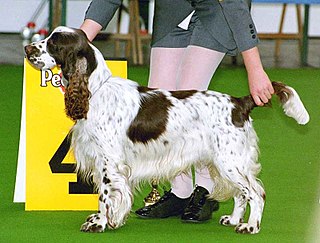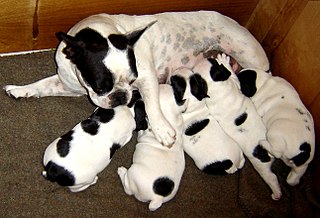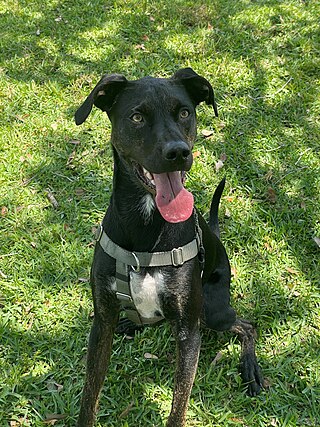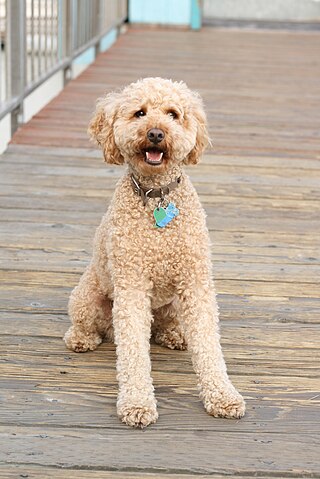
The American Kennel Club (AKC) is a registry of purebred dog pedigrees in the United States. In addition to maintaining its pedigree registry, this kennel club also promotes and sanctions events for purebred dogs, including the Westminster Kennel Club Dog Show, an annual event which predates the official forming of the AKC, the National Dog Show and the AKC National Championship. The AKC is a non-member partner with the Fédération Cynologique Internationale. The AKC recognizes 200 dog breeds, as of 2022.

Schutzhund, currently known competitively as IGP and previously as IPO, is a dog sport that tests a dog's tracking, obedience, and protection skills, and evaluates if a dog has the appropriate traits and characteristics of a good working dog. It was developed in Germany in the early 1900s as a suitability test for German Shepherds, but soon became the model for training and evaluating all five of the German protection breeds, which included Boxer, Dobermann, Giant Schnauzer, and Rottweiler. Though any breed of dog can participate, today the sport is dominated by German Shepherds and the Belgian Shepherd breed. Dog owners and handlers participate in Schutzhund clubs as a group activity for training the dogs, and clubs sponsor trials to test the dogs and award titles. The best dogs can qualify to participate in national and international level championships.

The Swedish Vallhund, also known as the Västgötaspets and Swedish cow dog, is a breed of dog native to Sweden. The breed's name, Vallhund, when translated into English, means herding dog, as the Swedish Vallhund was originally bred as a drover and herder of cows over 1,000 years ago. In 1942, the dog came close to extinction, but careful breeding and publicity by Swedish national Björn von Rosen and K. G. Zettersten managed to revive the breed in popularity and save it from its likely end. In 1943, the Swedish Kennel Club recognized the Swedish Vallhund as a breed, and officially categorized the Swedish Vallhund as "the Västgötaspets" for Västergötland, the province in which their revival took place. Since then, the breed has been recognized by, and bred in, over ten countries and has gained some popularity.

A dog show is an animal show, an event where dogs are exhibited. A conformation show, also referred to as a breed show, is a kind of dog show in which a judge, familiar with a specific dog breed, evaluates individual purebred dogs for how well the dogs conform to the established breed type for their breed, as described in a breed's individual breed standard.

Dog breeding is the practice of mating selected dogs with the intention of maintaining or producing specific qualities and characteristics. When dogs reproduce without such human intervention, their offspring's characteristics are determined by natural selection, while "dog breeding" refers specifically to the artificial selection of dogs, in which dogs are intentionally bred by their owners. Breeding relies on the science of genetics, hence a breeder who is knowledgeable on canine genetics, health, and the intended purpose of the dogs attempts to breed suitable dogs.

A mongrel, mutt, or mixed-breed dog is a dog that does not belong to one officially recognized breed, including those that result from intentional breeding. Although the term mixed-breed dog is sometimes preferred, many mongrels have no known purebred ancestors.

A kennel club is an organization for canine affairs that concerns itself with the breeding, showing and promotion of more than one breed of dog. Kennel clubs became popular in the mid 19th century. All-encompassing kennel clubs are also referred to as 'all-breed clubs', although "all" means only those breeds that they have decided to recognize, and "breed" means purebred dogs, not including dog hybrids and crossbreeds or mixed-breed dogs. A club that handles only one breed is known as a breed club.
In animal breed standards, a fault is an aspect of appearance or temperament that is considered detrimental to the breed type of the animal's breed. In dogs, faults have to do with the externally observable qualities of the dog such as appearance, movement, and temperament. Qualities separately tested such as tests for ability in specific work or sports, tests for genetic health, tests for general health or specific inherited disease, or any other specific tests for characteristics that cannot be directly observed are not referred to as faults. Minor faults may or may not have anything to do with the individual dog's ability to work or suitability as a pet.

Dog crossbreeds are dogs which have been intentionally bred from two or more recognized dog breeds. They are not dogs with no purebred ancestors, but are not otherwise recognised as breeds in their own right, and do not necessarily breed true.
A crossbreed is an organism with purebred parents of two different breeds, varieties, or populations. A domestic animal of unknown ancestry, where the breed status of only one parent or grandparent is known, may also be called a crossbreed though the term "mixed breed" is technically more accurate. Outcrossing is a type of crossbreeding used within a purebred breed to increase the genetic diversity within the breed, particularly when there is a need to avoid inbreeding.

The Canine Good Citizen (CGC) program, established in 1989, is an American Kennel Club program to promote responsible dog ownership and to encourage the training of well-mannered dogs. A dog and handler team must take a short behavioral evaluation of less than half an hour; dogs who pass the evaluation earn the Canine Good Citizen certificate, which many people represent after the dog's name, abbreviating it as CGC; for example, "Fido, CGC".
A breed registry, also known as a herdbook, studbook or register, in animal husbandry, the hobby of animal fancy, is an official list of animals within a specific breed whose parents are known. Animals are usually registered by their breeders while they are young. The terms studbook and register are also used to refer to lists of male animals "standing at stud", that is, those animals actively breeding, as opposed to every known specimen of that breed. Such registries usually issue certificates for each recorded animal, called a pedigree, pedigreed animal documentation, or most commonly, an animal's "papers". Registration papers may consist of a simple certificate or a listing of ancestors in the animal's background, sometimes with a chart showing the lineage.

Junior showmanship is a sport for young people in which they exhibit their dog handling skills in an event similar to a conformation dog show. Unlike a conformation show, it is the young handlers who are judged, not their dogs.

The Central Asian Shepherd Dog, also known as the Alabay, Alabai and Turkmen Wolf-Hound, is a livestock guardian dog breed. Traditionally, the breed was used for guarding sheep and goat herds, as well as to protect and for guard duty. In 1990, the State Agroindustrial Committee of Turkmenistan approved the standard of the Turkmen Wolf-Hound dog breed.

Smaland Hound is a breed of dog that originated in Sweden in the 16th century. Thought to be the oldest scent hound breed native to Sweden, it was first recognized by the Swedish Kennel Club in 1921. They are the smallest of the Swedish hound breeds, and have black and tan markings similar to the rottweiler. Internationally, it is recognized by a number of kennel clubs and registries including the Fédération Cynologique Internationale and United Kennel Club. It is considered rare, even in its native Sweden where only around sixty puppies are registered each year.

Dog behavior is the internally coordinated responses of individuals or groups of domestic dogs to internal and external stimuli. It has been shaped by millennia of contact with humans and their lifestyles. As a result of this physical and social evolution, dogs have acquired the ability to understand and communicate with humans. Behavioral scientists have uncovered a wide range of social-cognitive abilities in domestic dogs.

The East European Shepherd, also called Vostochno Evropeiskaya Ovcharka or VEO is a Ukrainian and Russian breed of shepherd dog. It was selectively bred in the Soviet Union from the German Shepherd to create a larger dog with better resistance to cold conditions, and was intended for military and guard work.
Temperament tests assess dogs for certain behaviors or suitability for dog sports or adoption from an animal shelter by observing the animal for unwanted or potentially dangerous behavioral traits, such as aggressiveness towards other dogs or humans, shyness, or extreme fear.

The American Bully is a modern breed of dog that was developed as a companion dog, and originally standardized and recognized as a breed in 2004 by the American Bully Kennel Club (ABKC). Their published breed standard describes the dog as giving the "impression of great strength for its size". In 2008, the American Bully was recognized by the European Bully Kennel Club (EBKC), and on July 15, 2013, by the United Kennel Club (UKC). The UK Kennel Club, American Kennel Club, and International Canine Federation do not recognize the American Bully as a separate breed.

Svenska Kennelklubben is a Swedish organization dedicated to purebred dogs, and dog owners. It was formed on 13 December 1889 by a group of noblemen and hunters with the aim to maintain the capability of good hunting dogs. According to its charter, the goals of the organization are "to create interest in, and promote, the breeding of mentally and physically healthy purebred dogs that are adequate in terms of working and hunting and that have a favorable appearance".


















